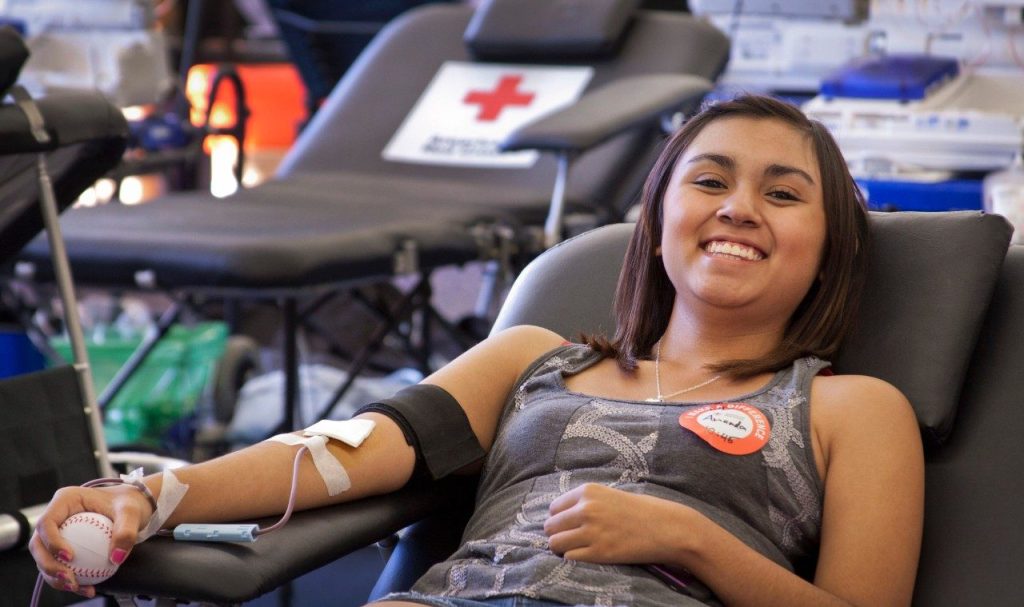The non-profit is pleading for donations to combat a national shortage.
Angela Maschka
January 30, 2022

A National Crisis
The ongoing Covid-19 pandemic has caused supply chain shortages ranging from toilet paper to computer chips. A recent addition to the ever-growing list of declining supply is donated blood. On January 11, 2022, the American Red Cross announced that they were facing a national blood shortage. Since the start of the pandemic in 2020, blood donations have decreased by 10%. The Red Cross attributes much of the decrease to low donor turnout in response to the Delta and Omicron variants, staffing limitations and blood drive cancellations. One donor demographic that has seen a sharp decline in participation is student donors, who went from making up a quarter of the donor pool in 2019 to only 10% in 2021. This drop is attributed the cancellation of many drives at high schools and colleges around the country. Weather related cancellations are also an issue in the winter months. Unlike toilet paper, blood is perishable and can’t be stockpiled; red blood cells have a shelf life of 42 days, while platelets, the portion of the blood that aids in clotting, only last 5 days. While shortages have become common place for many Americans, shortages of blood can have dire consequences for those who rely on them. Recipients of blood donations include cancer patients, trauma and burn victims and those with chronic or genetic conditions such as sickle cell disease. Many of those patients are being turned away from treatment because hospitals aren’t receiving enough donated blood, and must prioritize who receives it.
Awareness & Incentives
One way that the American Red Cross is combating the crisis is through awareness. In addition to social media, the announcement by the Red Cross was reported on both national and local news. The Red Cross had spokespeople available for interviews on the local level, highlighting the need and reporting on how it would affect the community. They also incorporated an impactful storytelling strategy in their awareness campaign. Their press release highlighted the plight of Kristen Mill, who requires blood transfusions due to a health problem. On a recent trip to the hospital for a transfusion, Mill was turned away because the hospital did not have any blood that matcher her type. Her story allowed them to put a face on the crisis, emphasizing the effect this shortage is having on everyday Americans. This storytelling model has also been emulated by local news stations around the country, showing the local impact, and creating the feeling that the issue is universal. Putting a human face on the crisis creates a feeling of empathy, which could spur the public to take action. The Red Cross has also made very clear the actions that people can take to ameliorate this crisis: donate, tell others to donate, and if you can’t donate then volunteer. They offer clear, measurable and achievable steps for the public to take to help them find a way out of the current crisis.
The month of January is National Blood Donor Month, a time when Americans are encouraged to help out others by donating blood if they can. In honor of National Blood Donor month, and in addition to raising awareness about the crisis, the American Red Cross has teamed up with the NFL to create an incentive to donate. Anyone who donates blood, plasma or platelets between January 1 and January 31, 2022 will be automatically entered into a drawing to win two tickets to Super Bowl LVI. They are also offering a secondary giveaway for a home theater package. Super Bowl tickets are a hot commodity every year, with prices for 2022 starting at $5000 for one ticket. Giveaways are great way for organizations to increase engagement, and in the case of the Red Cross, a great way to show donors appreciation and thanks. According to statistics from Outgrow, contests and giveaways with prizes of $1000 or more receive an engagement rate of 5.8% per 100 followers and travel promotions (the giveaway includes travel and accommodations) are the most popular category.
Excluded Donors
Despite the dire need for donors, many Americans are not eligible to donate, which has caused friction and frustrating across many groups, especially the LGBTQ community. In April 2020 the FDA relaxed restrictions for gay men who want to donate; donors will have to refrain from having sex with other men for three months prior to donation. The previous restriction required one year prior to donation, which was a reversal of the lifetime ban that had been implemented from the mid 1980’s through 2015 in response to the AIDS epidemic. Critics of the restriction believe that although there is progress in opening up donations to gay and bisexual men, the current restriction is still based on prejudice and not science. They argue that modern blood screenings can easily detect HIV, rendering the deferral period unnecessary. Other groups subject to the 3 months wait time include women who have had sex with gay or bisexual men and recipients of tattoos and piercings.
Although the American Red Cross does not set the policy, they still bear the brunt of criticism to the FDA’s rules. A tweet from the group in January requesting donations received hundreds of comments, many lamenting the policy regarding gay male donors. Many of the commenters noted that they would love to help but could not due their sexual orientation. They implored the Red Cross to devote their energy to fighting the rules, which would increase their donor base. Other commenters criticized the US healthcare system, pointing out that the blood that they freely give is then sold to hospitals, who would then charge them hundreds to thousands of dollars if they were to need a transfusion. A third group criticized the lack of blood drives in their area and the difficulty in making an appointment on the Red Cross website. Due to Covid-19 restrictions, most drives do not allow walk-ins; donors must make an appointment.
Attracting New Donors
The Twitter commenters do make a very compelling point about LGBTQ discrimination, though many seem misinformed about the American Red Cross’s current eligibility requirements. The organization offers a YouTube video covering common myths about blood donation eligibility, but does not touch on the issue of gay sex in the video. The information is also not readily available on the eligibility page of their website. It may benefit the organization to open up a dialogue with the LGBTQ community, explaining current FDA guidelines and discussing options for the future. Aligning the American Red Cross with LGBTQ interests could have the positive outcome of ending discrimination and opening up the potential donor pool to hundreds of thousands of new donors. Ineligibility is not the only reason that people don’t donate blood. Other reasons include fear (it will hurt), time (too busy) and lack of knowledge about the process. Perhaps including tips on their social media and webpage would help potential donors to overcome any fears about the process.
Overall, the American Red Cross employs numerous successful tactics to attract donors. They are a brand that has a long history and are known worldwide for their humanitarian efforts. What the Covid-19 pandemic has show though, is that even the best organizations can struggle in certain circumstances. The Red Cross is struggling to get people to care enough to act. One area that they could put more effort into is in attracting youth donors. Covid-19 has shuttered many college and high school drives, so the organization must change their strategy to attract that demographic in other ways, such as celebrity endorsements or teaming up with relatable organizations. They could also employ a more interactive social media presence by crowdsourcing stories; a campaign asking donors why they donate and how they feel about the experience may strike a chord with other social media users. They can remind potential donors that we are all human, all going through this experience together, and that together we can overcome this crisis.
…

Leave a comment